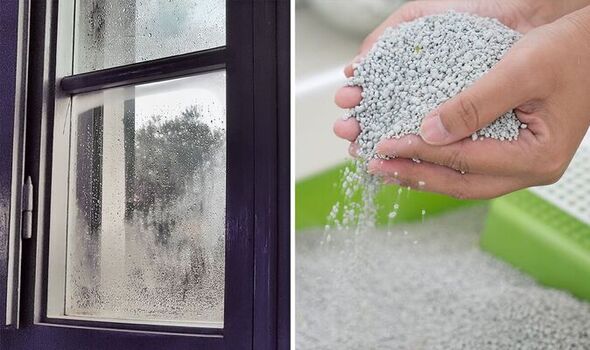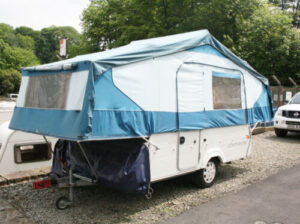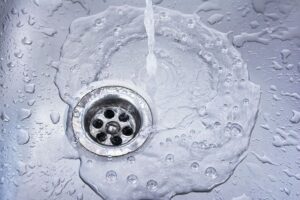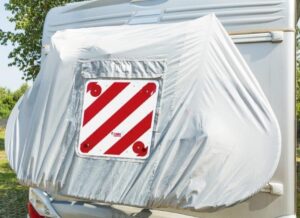Introduction to Condensation in Caravans
Condensation in caravans is a common issue faced by many caravan owners. It occurs due to the fluctuation in temperature and the amount of moisture present in the air. When the warm air inside the caravan comes into contact with the cooler windows, it cools down and loses its capacity to hold moisture, leading to condensation. This phenomenon is not only a nuisance but can also lead to mold growth, which can be harmful to health and damage the caravan’s interior.
Every caravan around the world can be affected by condensation. However, understanding the primary causes and recognizing the signs early on can help in addressing the issue promptly. While it’s a natural occurrence, especially in certain weather conditions, there are several measures caravan owners can take to minimize its effects and ensure a comfortable living environment.
Misconceptions about Caravan Windows
A prevalent misconception about caravan windows is that all acrylic caravan windows are vacuum sealed. This is not the case. The design of caravan windows is intentional, allowing them not to be entirely sealed. This design ensures that the windows can “breathe,” preventing mold and mildew from forming inside.
However, this design also means that condensation can form when there’s a significant temperature difference between the caravan’s interior and the outside environment, or if there’s an excessive amount of trapped moisture. It’s essential for caravan owners to be aware of this design feature and not mistake it for a defect or a sign of a broken seal.
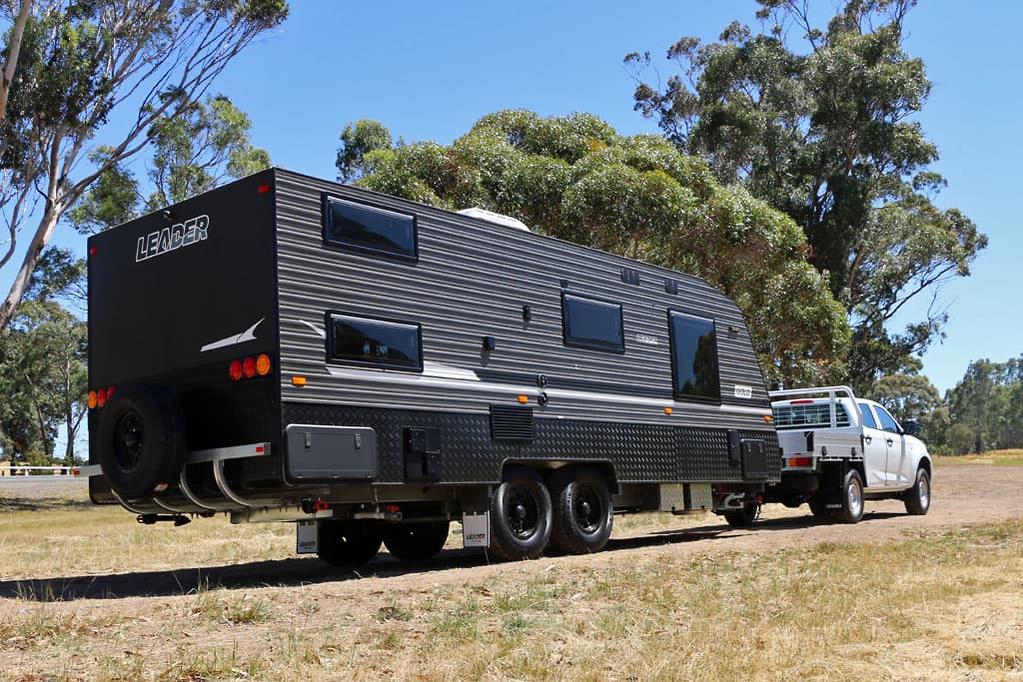
Reasons for Condensation Formation
The primary reason for condensation formation in caravans is the difference in temperature between the inside and outside of the caravan. When the interior of the caravan is warm, and the exterior is cold, it creates an environment conducive to condensation. This is especially true if there’s a lack of adequate ventilation, leading to trapped warm and moist air inside.
Another contributing factor is obstructions in the caravan’s vents. Items like ornaments or even beds can block these vents, leading to poor air circulation. This worsens the condensation as the moisture-laden air has nowhere to go, leading to a buildup on the windows and other surfaces.
Methods to Handle Condensation
Addressing condensation requires a multifaceted approach. One of the primary methods is ensuring proper ventilation. This can be achieved by periodically airing the caravan, opening doors, windows, and all cabinets to let fresh air flow in. It’s also advisable to avoid warming the caravan excessively as it can exacerbate the dampness. Checking for any blocked or obstructed vents is crucial.
Another effective method is to maintain a humidity level below 60% inside the caravan. This can be achieved by keeping skylights open throughout the day and night, leaving doors between rooms open, and ensuring nothing obstructs the ventilation. Some caravans also have ventilation openings that can get clogged over time. Unclogging these before parking in direct sunlight can allow the sun to naturally draw out the moisture.

Tips on Using Bungs
Bungs play a crucial role in managing condensation in caravans. These flexible elements seal the windows and are excellent at keeping moisture out, preventing condensation between the panes. Despite their small size, they are incredibly effective, especially for Polyplastic motorhome windows. However, it’s essential to use them correctly.
On sunny days, it’s beneficial to remove the bungs, allowing any trapped moisture to evaporate, preventing further condensation. However, it’s equally important to remember to replace them as the temperature begins to drop. This proactive measure can help in preventing future condensation incidents. While bungs won’t entirely stop condensation from forming, they play a significant role in managing and reducing its occurrence.
Prevention Techniques
Prevention is always better than cure, and this holds true for condensation in caravans. One of the primary prevention techniques is to avoid activities that introduce excessive moisture into the caravan’s atmosphere, especially before bedtime. For instance, doing dishes or boiling water can increase the humidity inside, making it more conducive for condensation to form.
Another essential preventive measure is to maintain adequate ventilation, especially during colder or damp weather conditions. Ensuring that vents are not obstructed and allowing fresh air to circulate can significantly reduce the chances of condensation. It’s also advisable to keep the caravan’s temperature relatively low at night, as hot air tends to hold more moisture, exacerbating the condensation problem.
Using Salt to Prevent Condensation
Salt has been a traditional remedy for various moisture-related issues, and its efficacy in preventing condensation is noteworthy. Experts suggest that salt can absorb excess moisture from the air, thereby reducing the amount of condensation that forms on windows and other surfaces.
Placing bowls of salt near windows or in areas where condensation is a frequent problem can help in drawing out the moisture. As the salt absorbs the moisture, it may become damp or even dissolve, indicating its effectiveness. However, it’s essential to replace the salt regularly to ensure continuous absorption and to prevent any potential mold growth.
Using Vinegar to Clear Condensation
Vinegar, a versatile household item, can be an effective solution against condensation. A simple homemade solution comprising two cups of water, two cups of white vinegar, and a few drops of dishwashing liquid can assist in clearing condensation. This mixture, when sprayed onto the window, can break down the moisture and prevent it from settling.
After spraying the solution, wiping it down with a soft cleaning cloth and allowing it to air dry can yield the best results. Not only does vinegar help in clearing the condensation, but its antifungal properties can also prevent mold growth, offering a dual benefit.

Role of Baking Soda in Preventing Condensation
Baking soda, like salt, is hygroscopic, meaning it can absorb moisture from its surroundings. This property makes it an effective tool in the fight against condensation. By drawing water molecules from the environment, baking soda can reduce the moisture content on nearby surfaces, making them drier and less prone to condensation.
Placing bowls of baking soda in areas prone to condensation can help in managing the moisture levels. Moreover, baking soda is non-toxic and safe to use around pets and children, making it a preferred choice for many caravan owners. Regularly replacing the baking soda ensures its continued effectiveness in moisture absorption.
Handling Condensation in Double Glazed Windows
Double glazed windows, with their two layers of glass separated by a gap, can sometimes trap moisture, leading to condensation between the panes. A temporary solution to this problem is placing a space heater or a hair dryer near the window. The heat from these devices can absorb the trapped moisture, clearing the condensation.
However, it’s crucial to understand that this is a temporary fix. The root cause of condensation in double glazed windows is often a disruption in the airtight sealing. If this sealing is compromised, moisture can enter the gap between the panes. Addressing the root cause by repairing or replacing the seal can offer a more permanent solution to the problem.

Conclusion:
Condensation in caravans, while a common occurrence, can be a significant concern if not addressed promptly. It’s not just about the discomfort of misty windows; unchecked condensation can lead to mold growth, potential health issues, and damage to the caravan’s interiors. However, with a comprehensive understanding of its causes and effective preventive measures, managing condensation becomes a manageable task. From the design intricacies of caravan windows to the role of everyday household items like salt, vinegar, and baking soda, there are numerous strategies at one’s disposal. Regular ventilation, proper use of bungs, and understanding the nuances of double-glazed windows further equip caravan owners to tackle this issue head-on. In essence, while condensation might be an inevitable part of the caravan experience, it doesn’t have to dampen the joy of your travels. With proactive measures, timely interventions, and a keen eye on maintaining the right environment inside the caravan, you can ensure clear windows, a healthy atmosphere, and uninterrupted scenic views on your adventures.
